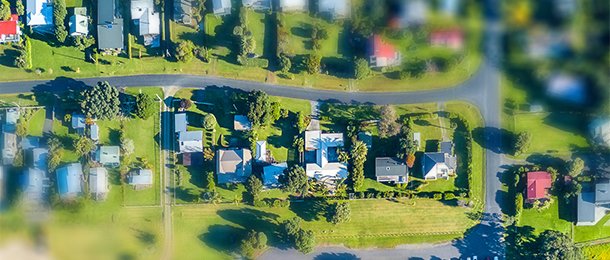In a COVID-19-centric world, it’s hard to think of a news story that will overshadow the pandemic, if only for a day. But the Retirement Income Review report, when the federal government finally chooses to release it, might just do that.
Certainly, this review will set the parameters for a critical debate about the future of compulsory superannuation. Although the level of the superannuation guarantee (SG) is likely to headline the debate, expect the role of the family home in people’s retirement income strategies to be an important sub-plot.
There are three main reasons why the home is set to be a bigger part of the retirement income debate. Despite having had compulsory superannuation for nearly 30 years, most couples and individuals still rely on a part of full pension in retirement, with the evidence suggesting most will not have annual income of $62,000 – the accepted Australian Prudential Regulation Authority (APRA) retirement standard for a couple.
Using this APRA number, superannuation and retirement planning website SuperGuide says a couple’s required savings ranges from $410,000 (using a generous 7 per cent annual return) to $1,020,000 (using a paltry 2 per cent annual return). If you split the difference and assume a 4 per cent annual return will apply, the couple will still need $700,000.
For many, $700,000 is a pipe dream, falling well short of the current average balances at retirement of around $450,000 for men and $375,000 for women. Even looking ahead, it’s not about to change, with the Productivity Commission’s 2018 report showing the average fund member who has pocketed the SG all their working lives will still fall short of $700,000.
Remember, too, the government’s decision to allow people to make early withdrawals of up $20,000 from superannuation for the 2020 and 2021 financial years must put a dent in the Productivity Commission’s numbers. It’s been as popular as free beer on a hot day, especially with young people, with many deciding one beer in the hand now is far better than two in the future.
The demographic factor is the other side of this coin. Increasingly, couples will live longer in retirement than 25 years. Not only that, advances in medical science suggest they will be fitter and healthier, putting bigger demands on their retirement savings.
The third factor is fiscal. Public debt in Australia is now on a par with its budgetary position following World War II, and this will have to be addressed. Although no politician from either side of the fence is saying it, it would be naïve to think higher taxes on superannuation are not on a drawing board somewhere deep in the bowels of Treasury. Options abound, the easiest, and probably most politically palatable, would be to increase the headline super tax rate of 15 per cent. It’s a tax on the future and that’s a lot easier to sell than a tax that impacts on people’s earnings now.
Pull these three factors together and it all points to future governments wanting the family home to play a bigger role in people’s retirement income strategies. Expect the Retirement Income Review to do so, and after that the momentum can only grow.
Today, there are five ways to use the family home to generate income (see below), but expect the number of options to increase as housing equity plays a bigger role in people’s retirement strategies.
Downsize:
This involves selling to move to cheaper/smaller accommodation.
Positives: Sale time can be relatively quick. Ideal for those wanting a sea change, tree change or smaller accommodation.
Negatives: The high costs involved in selling and relocating, and for many, breaking emotional ties by moving away from family, friends and familiar surroundings.
Reverse mortgage:
This option gives people aged 60 and over access to some of the capital in their house (typically between 15 per cent and 20 per cent of the equity).
Positives: Choice of payment: regular income, lump sum or both. More suited for those without dependants.
Negatives: Limited to certain postcodes. Interest rate fluctuations. Interest is capitalised, increasing the debt burden.
Government Pension Loans Scheme:
This is a government reverse mortgage offering regular income. The applicable iinterest is fixed at 5.25 per cent.
Positives: Short or long term. Can be repaid in full or part.
Negatives: No lump sum payments. Regular payments cannot exceed 150 per cent of the pension payment. Limited to veterans or partners of veterans aged 60-plus.
Home reversion scheme:
This is an equity release option where the cost of the equity release is based on the amount to be borrowed measured against an expected lifespan. When the borrower dies or sells, that amount is deducted from the sale.
Positive: Choice of regular payments or lump sum.
Negatives: Only offered by one major bank. Only available to certain postcodes, mostly Melbourne and Sydney.
Fractional Senior Equity Release:
Offered by fractional investment manager DomaCom exclusively via licensed financial planners.
Positives: Investors get fixed rental income. Capital gain when property sold. Option to invest via super. Homeowners retain right of abode or can rent property out. Choice of lump sum or regular income.



